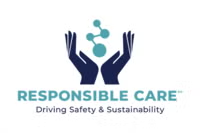In 2016, the United Nations (UN) undertook a mission to create a more sustainable future “for all people and the world by 2030.” To achieve this, the UN developed a blueprint toward sustainability, known as the UN Sustainable Development Goals (SDGs). This 17-point plan identifies a range of goals, from eliminating hunger and poverty to promoting sustainable economic growth and building resilient infrastructure.
If you are like many Americans, you may not really know what sustainability means, but you may associate it with “environmentally friendly”, “green”, or “renewable”, and you wouldn’t be incorrect. What you may not readily think about is how many of your everyday products are formulated to have long lives, making them more sustainable. The manufacturers of many of these products use additives known as material preservatives to help ensure that their products remain durable and do not succumb to unwanted spoilage and decay caused by microbial growth from bacteria, fungi and mold.
How Do Antimicrobial Material Preservatives Contribute to SDGs?
While it may not be immediately apparent, material preservatives are critical in the fight for a sustainable future. They help contribute to several of the UN SDGs, such as:
- Goal 9: Build Resilient Infrastructure, Promote Inclusive and Sustainable Industrialization and Foster Innovation
- Goal 11: Make Cities and Human Settlements Inclusive, Safe, Resilient and Sustainable
- Goal 12: Ensure Sustainable Consumption and Production Patterns
- Goal 13: Take Urgent Action to Combat Climate Change and Its Impacts
These goals revolve around the idea of reducing pollution in water and the air; maximizing the lifecycle and duration of consumer products; decreasing the consumption of natural resources; and promoting efforts to use renewable energy sources and more environmentally benign formulations. The use of antimicrobial material preservatives contributes to all of these benefits.
What Are Antimicrobial Material Preservatives, and How Are They Used?
Antimicrobial material preservatives are chemistries that are used in a variety of products to help prevent decay, deterioration, and spoilage caused by tiny organisms known as microbes. Material preservatives are also critical to increasing the sustainability of construction products.
Wood is integral to many buildings and structures, from wooden bridges and railroad ties to housing frames, porches, and outdoor furniture. Many wood-based products are exposed to a number of elements – such as climate, moisture, and temperature – that can create breeding grounds for harmful microbial growth, which causes decay. To prevent this decay, wood can be injected (treated) with material preservatives to help resist decay.
When using treated wood, our infrastructure can be sounder; our construction materials can be more sustainable; and our consumption of natural resources can be curbed (SDG 9-13). Treated railroad ties are a meaningful example of the profound benefits of preserved (treated) wood. When treated wood is used, the ties can remain functional and useful for more than 50 years as compared to untreated ties that may last five years or less. Untreated wood can decay quickly but treated wood can last longer.
Antimicrobial material preservatives are also essential components in a vast number of water-based products, including paints, coatings, laundry detergent, fabric softeners and cosmetics. Since water is a frequent breeding ground for microbes, water-based products have an increased chance for unwanted microbial growth, which can allow mold and bacteria to grow uncontrolled leading to products becoming spoiled.
Preventing this spoilage is an important contribution to environmental sustainability. Without material preservatives, not only would you likely be forced to replace these products more frequently, which can be costly, but the amount of product and packaging going into landfills tends to increase (SDGs 11 and 12). We would also see a rise in the environmental implications of increased manufacturing and transportation, both of which can have significant impacts on the amount of greenhouse gas (GHG) emissions in the air (SDG 13).
How Are Antimicrobial Material Preservatives Used in Consumer Goods?
Products like shoes, sportswear, and shower curtains can also be attacked by microorganisms. These products can absorb humidity and moisture, and microbial build-up can lead to unpleasant odors, mold, and deterioration. Antimicrobial additions to the textiles of these products can inhibit the onset of these negative effects, increasing the durability of these products and thus extending their useful life. As a result, consumers can retain and use these products for a longer amount of time and may not be compelled to replace them as frequently (SDG 12).
Additionally, natural resources such as timber do not have to be harvested as frequently, and there is reduced need for leather from cattle and natural and synthetic fibers when products such as shoes and clothing last longer (SDG 12).
As noted, because of material preservative use, GHG emissions can be reduced. During a typical manufacturing process, vast amounts of carbon are released into the atmosphere. Since products that use material preservatives tend to last longer, they don’t have to be manufactured as often, thus sharply reducing the carbon emissions associated with them (SDG 13).
Material preservatives are rarely viewed as being on the forefront of creating a sustainable future, but it’s difficult to argue against the central role they play. After all, the Oxford English Dictionary defines sustainability as “the ability to be maintained at a certain rate or level,” material preservatives allow products to deliver on this definition.



